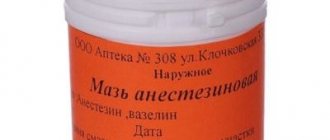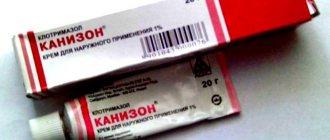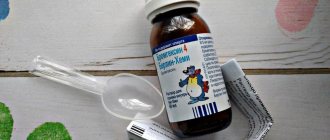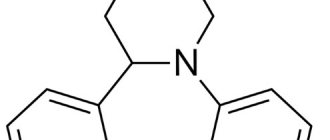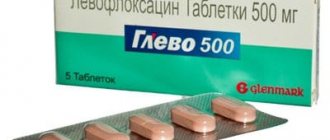- October 25, 2018
- Other drugs
- Olga Ivanovna
Indomethacin tablets are widely popular. They belong to the group of non-steroidal anti-inflammatory drugs. They have analgesic, antipyretic and other effects necessary for the treatment of inflammatory diseases.
Pharmacodynamics and pharmacokinetics
The drug Indomethacin (Sopharma; Berlin Chemie, Balkanfarma, etc.) is a derivative of indoleacetic acid and belongs to the NSAID group of drugs, which are characterized by their antipyretic , anti-inflammatory , antiaggregation and analgesic effects.
The effectiveness of this medication is associated with its inhibitory effect on the enzyme COX ( cyclooxygenase ), which leads to the suppression of metabolic transformations of arachidonic acid and a decrease in the synthesis of prostaglandins . Also, one of the effects of the drug is inhibition of platelet aggregation .
Parenteral and oral administration of Indomethacin reduces the severity of pain , especially in relation to joint pain , both during movement and at rest, reduces the manifestations of morning swelling of the joints and their stiffness, and also increases the range of movements. The anti-inflammatory effect develops after 5-7 days of treatment.
External use of this drug helps eliminate pain, reduce swelling and weaken erythema, as well as reduce morning joint stiffness and increase motor activity .
Indomethacin tablets, when taken orally, are quickly absorbed from the gastrointestinal tract. Serum Cmax is observed after 120 minutes. After enterohepatic recirculation, further metabolic transformations occur in the liver. In plasma, the unchanged active ingredient and unbound metabolic products are determined - desbenzoyl , desmethyl , desmethyl-desbenzoyl metabolites. The average T1/2 lasts approximately 4.5 hours. Excretion of 60% of the drug, in the form of unchanged substance and metabolic products, is carried out by the kidneys and 33%, in the form of metabolites, by the intestines.
Rectal suppositories are characterized by rapid absorption in the rectum. Bioavailability with this route of administration of the drug is 80-90%. Approximately 90% of the active ingredient is bound to whey proteins. T1/2 varies between 4-9 hours. Metabolic transformations occur in the liver. Approximately 70% of the drug is excreted by the kidneys, and about 30% by the intestines.
How the drug works
After taking Indomethacin tablets orally, absorption of the drug from the stomach begins. After two hours, the concentration of the active substance in the blood plasma reaches its maximum (in the form of unchanged substance and unbound metabolites). The product is processed by the liver and intestines. When absorbed, indomethacin inhibits prostaglandin synthesis. This is a hormone that provokes inflammation and pain in the body.
Also, when indomethacin enters the body, the process of platelets attaching to each other gradually stops. This is a major factor in easing the pain of inflamed joints. This effect also eliminates swelling and stiffness of movement.
The active substance of the drug is distributed throughout all organs and tissues of the body and can cross the placental and blood-brain barrier. The substance penetrates the joint through the synovial membrane. Moreover, its concentration in synovial fluid is several times higher than in the blood.
The half-life of the active substance is about four and a half hours. About 60% is excreted from the body through the urethra, and 33% through the intestines. The remaining portion of the active substance leaves the body along with bile.
Indications for use
Indications for the use of Indomethacin in the form of tablets and suppositories include:
- articular syndrome (including painful manifestations of gout , rheumatoid arthritis , ankylosing spondylitis , osteoarthritis );
- various neuralgia ;
- pain syndrome in the spine;
- dysmenorrhea;
- myalgia;
- diffuse painful conditions of connective tissue;
- traumatic inflammatory processes in joints and soft tissues;
- rheumatism;
- infectious and inflammatory processes noted with adnexitis , cystitis , prostatitis and diseases of the ENT organs (auxiliary therapy).
Indomethacin gel and ointment is indicated for use for:
- myalgia;
- traumatic inflammatory processes occurring in joints and soft tissues;
- articular syndrome (including painful manifestations of gout , rheumatoid arthritis , ankylosing spondylitis , osteoarthritis );
- pain in the spine;
- neuralgia.
Compound
The medicine is available in the form of round light or dark yellow tablets, which include inclusions. If you cut the tablet in half, you can see that it has two layers. The main active ingredient is indomethacin itself. In addition, each tablet contains:
- cellactose;
- potato starch;
- calcium or magnesium stearate;
- titanium dioxide;
- oidragite or eudrogyte;
- talc;
- dibutyl phthalate;
- diethyl phthalate;
- colloidal silicon dioxide;
- polyvinylpyrrolidone;
- orange or brown dye.
Contraindications
Indomethacin tablets (Sopharma, Balkanfarma, etc.), as well as Indomethacin suppositories (Berlin Chemie, Sopharma, etc.) are contraindicated for use in:
- Crohn's disease;
- liver failure or active liver pathologies ;
- hypersensitivity;
- ulcerative colitis;
- pregnancy;
- bronchial asthma;
- breastfeeding;
- acute rhinitis or urticaria , in the past caused by taking NSAIDs;
- confirmed hyperkalemia;
- gastrointestinal ulcer;
- CRF (with CC less than 30 ml/min) or progressive renal pathologies ;
- bleeding;
- recently performed coronary artery bypass surgery ;
- bleeding disorders;
- congenital heart defects ;
- hematopoietic disorders (including anemia and leukopenia );
- under the age of 14 years.
Additionally, Indomethacin 50/100 suppositories (Berlin Hemi, Sopharma, etc.) are prohibited for use when:
- manifestations of hemorrhoids ;
- rectal bleeding;
- symptoms of proctitis .
Both dosage forms of the drug should be prescribed with caution when:
- IHD;
- somatic diseases of a severe nature;
- cerebrovascular disorders;
- depression;
- CHF;
- parkinsonism;
- dyslipidemia;
- epilepsy;
- hyperlipidemia;
- mental disorders;
- diabetes mellitus;
- alcoholism;
- thrombocytopenia;
- pathologies of peripheral arteries;
- history of ulcerative lesions of the gastrointestinal tract
- arterial hypertension;
- long-term use of other NSAIDs;
- nicotine addiction;
- CRF (with CC 30-60 ml/min);
- hyperbilirubinemia;
- presence of Helicobacter pylori ;
- liver cirrhosis with concomitant portal hypertension ;
- parallel use of anticoagulants ( Warfarin ), oral glucocorticoids ( Prednisolone ), antiplatelet agents ( Clopidogrel , Aspirin ), SSRIs ( sertraline , Citalopram , Paroxetine , Fluoxetine );
- in old age.
Gel and ointment for topical use are contraindicated for:
- damage to the skin in the area of application;
- III trimester of pregnancy (if the drug is applied to large areas of the body);
- hypersensitivity;
- up to 1 year of age.
External dosage forms are prescribed with caution when:
- any combination of bronchial asthma with polyposis and intolerance to NSAIDs ;
- I and II trimester of pregnancy;
- exacerbation of gastrointestinal ulcer ;
- breastfeeding;
- bleeding disorders;
- up to 6 years old.
Pharmacological action of Indomethacin tablets
The mechanism of action of Indomethacin is that the drug inhibits the activity of the enzymatic group that produces prostaglandin hormones, which take an active part in the initiation and development of an inflammatory focus in the joints or body. The bone marrow's production of platelets, which contribute to painful swelling and swelling, is also reduced. At the same time, the temperature of the body area where the inflammation occurred decreases, the pain syndrome decreases, and morning stiffness and swelling go away.
After administration, according to the description, the tablets are absorbed very quickly, starting to act after 20-30 minutes, the maximum concentration of Indomethacin in the bloodstream is reached after 2 hours. A pronounced anti-inflammatory effect occurs after 5-7 days of continuous use. It is excreted by the kidneys or intestines after 6-8 hours, after intensive processing by the liver.
Side effects
Side effects when using tablets or suppositories
Digestive system:
- flatulence;
- nausea, vomiting;
- gastrointestinal bleeding;
- anorexia;
- jaundice;
- unpleasant or painful sensations in the abdomen;
- gastritis;
- constipation / diarrhea ;
- gastrointestinal perforation;
- erosive and ulcerative lesions of the gastrointestinal tract;
- stomatitis;
- intestinal strictures;
- bleeding from a diverticulum or sigmoid colon;
- hepatitis.
Nervous system:
- muscle weakness;
- fainting;
- dizziness;
- dysarthria;
- headache;
- parkinsonism;
- depression;
- paresthesia;
- feeling tired;
- sleep disorders;
- sense of anxiety;
- mental disorders (psychotic episodes, depersonalization );
- drowsiness;
- peripheral neuropathy;
- convulsions;
- involuntary muscle contractions.
The cardiovascular system:
- hematuria;
- swelling;
- heart failure (congestive);
- increased blood pressure;
- palpitation;
- tachycardia;
- arterial hypotension;
- chest pain;
- arrhythmia.
Hematopoietic system:
- petechiae;
- leukopenia;
- ecchymoses;
- thrombocytopenia;
- DIC syndrome;
- purpura;
- aplastic/hemolytic anemia.
Urinary system:
- impaired renal function;
- nephrotic syndrome;
- proteinuria;
- interstitial nephritis;
- renal failure.
Sense organs:
- deafness;
- visual perception disorder;
- hearing impairment;
- diplopia;
- tinnitus;
- periorbital pain.
Metabolism:
- hyperkalemia;
- glucosuria;
- hyperglycemia.
Allergic manifestations:
- hair loss;
- itching / rash ;
- angiitis;
- hives;
- anaphylactic phenomena;
- erythema nodosum;
- a sharp drop in blood pressure;
- exfoliative dermatitis;
- bronchial asthma;
- Stevens-Johnson syndrome;
- pulmonary edema;
- erythema multiforme;
- dyspnea;
- Lyell's syndrome;
- respiratory distress;
- angioedema.
Other:
- gynecomastia;
- vaginal bleeding;
- hyperhidrosis;
- tides;
- nose bleed;
- tightness/enlargement of the mammary glands.
Additionally for suppositories
- exacerbation of colitis ;
- irritation of the rectal mucosa;
- tenesmus;
- exacerbation of hemorrhoids .
Side effects when using gel or ointment
- allergic phenomena;
- itching / rash in the area of application;
- dry/flushed skin;
- burning sensation ;
- systemic manifestations (with prolonged use);
- exacerbation of psoriasis (in isolated cases).
What experts say
Doctors have a mixed opinion regarding Indomethacin. Which is better: tablets or suppositories? Most experts are inclined towards the second option. The fact is that tablets have many more side effects compared to rectal suppositories. In addition, the latter demonstrate a much more pronounced therapeutic effect.
If there is a need to use non-steroidal anti-inflammatory drugs internally, experts give preference to more modern, improved drugs belonging to the oxicam group. Due to their composition, they have a much gentler effect on the gastrointestinal tract.
Instructions for use of Indomethacin (Method and dosage)
Indomethacin tablets, instructions for use
The dosage regimen of the drug in the form of tablets is established individually, taking into account the severity of the negative symptoms of the diagnosed disease. The tablets are taken orally immediately after or during meals. As a rule, the initial daily dosage corresponds to 25 mg, which is indicated to be taken 2-3 times every 24 hours. If clinical efficacy is unsatisfactory, the daily dose should be doubled (2-3 times 50 mg). A maximum of 200 mg of the drug is allowed internally per day. After achieving a satisfactory effect, therapy is continued for 4 weeks at the same or reduced dosage. In case of long-term treatment, 75 mg of this medication can be taken for a maximum of 24 hours.
To relieve acute/severe conditions, it is possible to use indomethacin injections , and then switch to the use of tablets or suppositories. In case of observed pain in the organs of vision, eye drops with a similar active ingredient (for example, Indocollir ) can be prescribed.
Indomethacin suppositories, instructions for use
Indomethacin suppositories (Altfarm, Sopharma, etc.) are intended for rectal (into the rectum) use. The procedure for administering suppositories should be performed before bedtime after preliminary cleansing of the intestines. Indomethacin suppositories (Berlin Chemie, Biosynthesis, etc.) should be inserted into the rectum as deeply as possible in order to better absorb the drug. Typically, 3-time administration of 50 mg suppositories or a single administration of 100 mg suppositories are prescribed within 24 hours. In case of severe pain syndrome (for example, an attack of gout), rectal daily use of 200 mg of the drug in suppositories is allowed (in addition to oral administration).
Indomethacin gel and ointment, instructions for use
Indomethacin gel and ointment (Sopharma, Balkanfarma, etc.) are intended for application and rubbing into the skin located directly above the painful area of the body, for which Indomethacin gel or ointment (Sopharma, Akrikhin, etc.) is applied in a thin layer to the intact and previously cleansed skin.
5% external agents are indicated to be applied at intervals of 3-4 times every 24 hours. Applications of 10% drugs should be carried out 2-3 times a day. Single and maximum dosages of external forms of the drug are calculated based on the amount (in centimeters) of gel or ointment squeezed out of the tube. Adult patients can use 4-5 cm of squeezed out drug one time, and a maximum of 15-20 cm per day. Children are advised to use half the dosage.
Reviews about candles
You can hear the following reviews from patients about Indomethacin suppositories:
- the candles are small in size, so there are no problems or discomfort during administration;
- Pain relief occurs almost immediately after administration;
- significantly improves well-being after childbirth with ruptures;
- instantly relieve pain during menstrual periods.
Of the negative points, it is worth noting the following:
- severe stool upset (diarrhea);
- candles quickly melt and flow out, even if the body is in a horizontal position.
Overdose
Negative symptoms of an overdose of Indomethacin, most often observed with the use of oral or rectal dosage forms, are manifested by: nausea/vomiting, disorientation , severe headaches , memory impairment , dizziness . In particularly serious cases, numbness of the limbs , paresthesia , and convulsions .
The prescribed treatment should be consistent with the negative manifestations being monitored.
Pregnancy and lactation
Indomethacin may cause disturbances in fetal development, blockage of the arterial ducts, myocardial insufficiency, bleeding due to a decrease in the number of platelets in the bloodstream, kidney dysfunction, difficulty in labor or premature birth. Based on the above facts, indomethacin tablets are prohibited for use during late pregnancy and breastfeeding. During the first two trimesters, the drug is prescribed only when absolutely necessary.
Interaction
The combined use of Methotrexate , lithium and Digoxin increases their serum concentrations, which may cause increased toxicity .
Concurrently taken ethanol-containing drugs, glucocorticoids , Colchicine and corticotropin increase the possibility of gastrointestinal bleeding .
Co-administration with medications including Paracetamol increases the risk of nephrotoxicity .
Combinatorial treatment with insulin and other hypoglycemic drugs enhances their effect.
Simultaneous use with indirect antiplatelet agents , anticoagulants and thrombolytics enhances their effects, which increases the possibility of bleeding .
Gold and Cyclosporine taken together increase nephrotoxicity (most likely due to inhibition of prostaglandin ).
Parallel use with potassium-sparing diuretics reduces their effects and, as a result, increases the risk of hyperkalemia .
Combination therapy with cefamandole , plicamycin, cefaperazone , valproic acid , cefotetan increases the risk of bleeding and increases the incidence of hypoprothrombinemia .
The simultaneous use of antihypertensive and uricosuric medications leads to a decrease in their effectiveness.
When estrogens , glucocorticoids and other NSAIDs , an increase in their inherent side effects is observed.
Cholestyramine and antacids reduce the absorption of indomethacin .
Combinatorial use with zidovudine may cause an increase in its toxicity (due to inhibition of metabolism).
Concurrent use of myelotoxic medications increases the manifestations of their hematotoxicity .
Antibiotic or not
Many people mistake Indomethacin for an antibacterial drug when trying to treat bacterial infections with tablets. However, the drug belongs to the group of NSAIDs and does not act on pathogens, but on inflammation itself, which is the body’s reaction to exogenous factors. You cannot take the medicine as an antibiotic! By acting in this way, you can start the disease, and treatment will continue in the hospital. It must be remembered that indomethacin tablets relieve the symptoms of the disease without affecting its cause.
special instructions
Elderly people, patients with heart failure , gastrointestinal, liver/kidney pathologies, dyspepsia , epilepsy , arterial hypertension , parkinsonism , as well as patients after major surgical operations careful use of indomethacin
At the entire stage of treatment with oral and rectal forms of the drug, you should monitor the blood picture and the functionality of the liver / kidneys .
Concomitant use with diflunisal and other NSAIDs .
When combined with lithium , it is necessary to take into account the possibility of symptoms of its toxic effect .
There is a significant risk of developing complications from the gastrointestinal tract ( bleeding , ulcerative/erosive lesions, etc.) associated with the use of drugs from the NSAID , including indomethacin , for which reason it is better to combine them with meals.
Suppositories can be prescribed for prostatitis only if there is no damage to the rectum .
It is necessary to explain to the patient exactly how to use suppositories in gynecology (for example, for dysmenorrhea ). indomethacin suppositories are prescribed rectally (into the rectum).
Gel and ointment can be applied only to mechanically intact areas of the skin, and also avoid contact of these dosage forms with mucous membranes and eyes.
basic information
The composition of Indomethacin tablets includes the active substance of the same name (25 mg in each tablet), as well as some auxiliary components. Indomethacin is a derivative of indolylacetic acid. The pills have a convex shape and are covered with a light brown coating. The average cost of a package of 30 tablets is about seventy rubles.
The medicine is sold freely in pharmacies, without a doctor's prescription. Tablets should be stored in their original packaging at a temperature not exceeding 25 degrees. The room should be well ventilated. After the expiration date, the use of tablets is strictly prohibited.
The drug in question is also available in the following forms:
- suppositories for administration into the rectum (0.05 g and 0.1 g);
- solution for injection in ampoules (0.03 g).
Analogs
Level 4 ATC code matches:
Voltaren Emulgel
Ultrafastin
Dicloran
Dicloran Plus
Dolgit
Nise
Ketonal
Ketorol
Febrofeed
Fastum gel
Diclofenac
Finalgel
Bystrumgel
Deep Relief
Butadion
Diklovit
Artrosilene
Olfen
Fanigan Fast
Methindol
Indomethacin analogues are presented in oral, rectal and external dosage forms of drugs with a similar main effect:
- Adolor;
- Diclofenac;
- Aertal;
- Dicloran;
- Voltaren;
- Bioran;
- Diklak;
- Ketalgin;
- Ortofen;
- Ketorol;
- Rapten;
- Naklofen;
- Ketanov;
- Piroxicam;
- Ibuprofen;
- Nise , etc.
Reviews about Indomethacin
With regard to analgesic and anti-inflammatory effectiveness, reviews of tablets, as well as reviews of Indomethacin suppositories, are in most cases positive. For many patients, these dosage forms of the drug really helped to get rid of pain and swelling in the joints, muscles, back, etc. for various pathologies of the musculoskeletal system without causing any side effects. However, in some cases, Indomethacin tablets and suppositories (Berlin Chemie, Sopharma, etc.) did not have the expected effect, and even, on the contrary, led to the development in patients of various negative side effects inherent in this medication. All this suggests that this drug is not suitable for everyone and the choice of a drug from the NSAID group should be made on an individual basis.
The effectiveness of using Indomethacin gel or ointment also depends on the individual characteristics of the patient’s body, but in this case, even if the treatment is not effective, the development of side effects of the drug is unlikely.
It is also not uncommon to find references to the prescription of indomethacin suppositories in gynecology for pregnant women, which in itself looks at least strange, because the official instructions, and the experience of using NSAIDs in this period, prohibit the use of suppositories during pregnancy , as well as breastfeeding .
What patients say about the medicine
In addition to the instructions for Indomethacin tablets, you should also read patient reviews about this drug. Here are the main positive points:
- the product very effectively relieves the unpleasant symptoms of gout (albeit temporarily);
- if you take the tablets with milk rather than water, the negative effect on the gastrointestinal tract is much less;
- affordable price;
- pronounced anti-inflammatory and analgesic activity;
- relieves pain in the back and joints;
- the drug quickly reduces body temperature.
But don't overlook the negative comments:
- at the beginning of treatment, severe attacks of nausea and vomiting occur;
- causes many side effects, which are not compensated by effectiveness;
- constant medical supervision is required while taking the drug;
- for a pronounced and lasting effect, long-term use is necessary;
- outdated formula.
Indomethacin price, where to buy
The average price of Indomethacin in tablets No. 30 is: “Sopharma” - 50 rubles; "Balkanfarma" - 40 rubles.
The price of Indomethacin 100 mg suppositories No. 10 varies greatly depending on - 70 rubles; “Sopharma” – 90 rubles; “Berlin-Chemie” – 400 rubles.
The price of Indomethacin ointment 10% 40 grams varies within the following range: “Akrikhin” - 65 rubles; "Sopharma" - 80 rubles.
On average, gel 40 grams of “Balkanfarma” can be purchased: 5% – 50 rubles; 10% – 70 rubles.
- Online pharmacies in RussiaRussia
- Online pharmacies in UkraineUkraine
- Online pharmacies in KazakhstanKazakhstan
ZdravCity
- Indomethacin suppositories 50 mg No. 6 Pharmaprim
54 RUR order - Indomethacin-Sopharma rectal suppositories 50mg 6pcsSopharma AD
116 RUR order
- Indomethacin rectal suppositories. 100 mg 10 pcs. PAO Biosintez
51 RUR order
- Indomethacin Sopharma ointment 10% 40gSopharma AD
123 RUR order
- Indomethacin 50 Berlin-Chemie rectal suppositories. 10 pieces Berlin-Chemie
RUB 317 order
Pharmacy Dialogue
- Indomethacin ointment (tube 10% 40g)Sopharma
69 RUR order
- Indomethacin (supp. rect. 50 mg No. 10)Berlin-Chemie AG/Menarini
RUB 297 order
- Indomethacin (supp. 50 mg No. 6)Sopharma
69 RUR order
- Indomethacin suppositories 100 mg No. 6Sopharma
94 RUR order
- Indomethacin (supp. rect. 100 mg No. 10)Berlin-Chemie AG/Menarini
408 rub. order
show more
Pharmacy24
- Indomethacin Plus 40 g ointment PAT"Khimpharmzavod"Chervona Zirka",Kharkiv, Ukraine
17 UAH.order - Indomethacin Sopharma 50 mg N6 suppositories AT "Sopharma", Bulgaria
32 UAH order
- Indomethacin 10% 40 g ointment AT "Sopharma", Bulgaria
21 UAH order
- Indomethacin 25 mg N30 tablets AT "Sopharma", Bulgaria
28 UAH order
PaniPharmacy
- INDOMETHACIN tablets Indomethacin tablets. 25 mg No. 30 Ukraine, Health LLC
23 UAH order
- INDOMETACIN suppository Indomethacin suppository 50 mg No. 6 Bulgaria, Sopharma
42 UAH order
- INDOMETHACIN ointment Indomethacin ointment 10% 40g Bulgaria, Sopharma
24 UAH order
- INDOMETHACIN tablets Indomethacin tablets. 25 mg No. 30 Bulgaria, Sopharma
34 UAH order
- Indomethacin plus ointment Indomethacin ointment Plus tube. 40g Ukraine, Krasnaya Zvezda JSC
19 UAH order
show more
